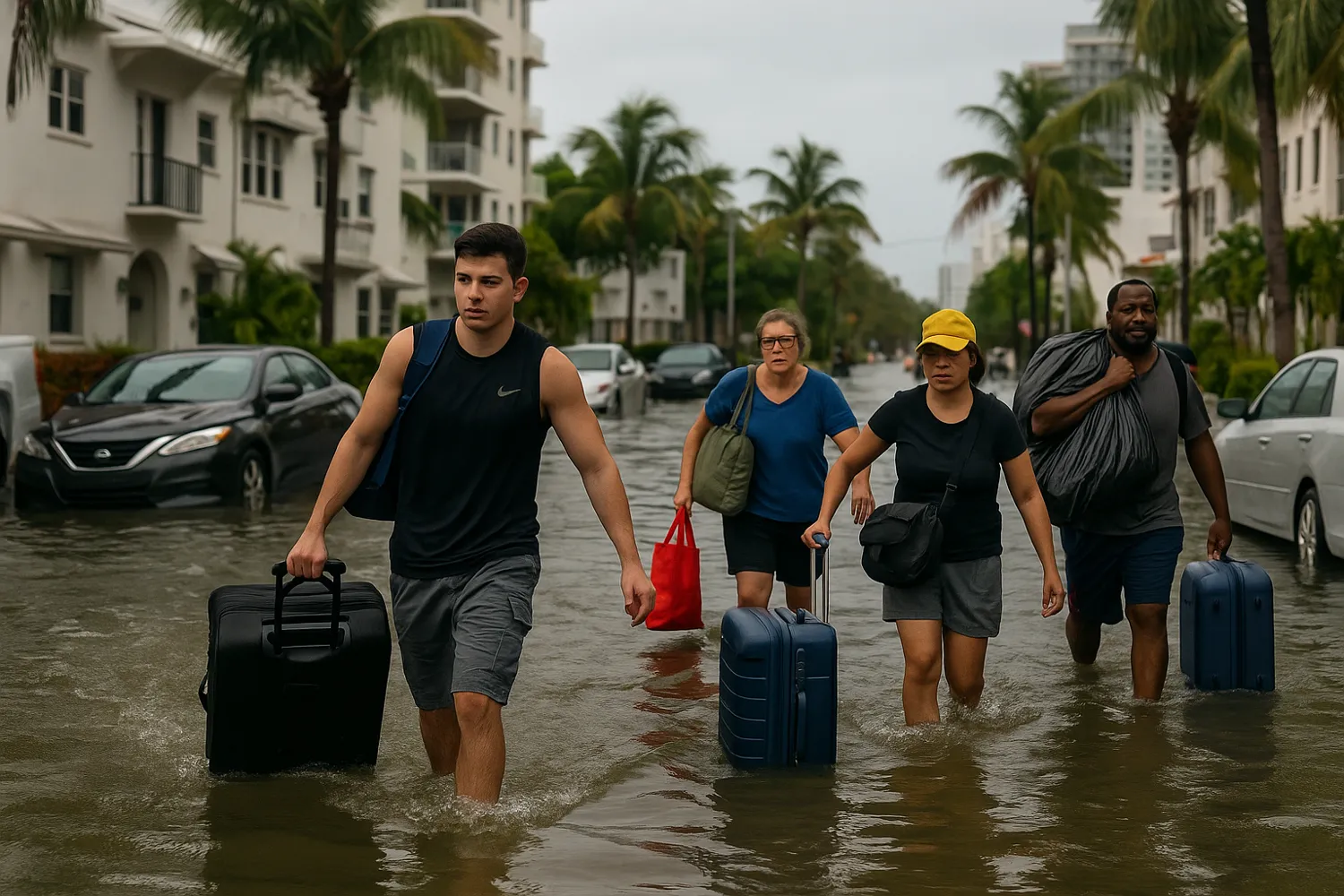Climate migration is no longer a prediction—it’s here, and it is remaking our cities. Millions are being forced to abandon homes swallowed by rising seas or battered by extreme storms. Governments present adaptation plans, yet the truth is brutal: the infrastructure of global cities cannot keep pace with the tide. This is not just a humanitarian story. It is a political failure.
Context: the official narrative
The mainstream storyline is predictable. Officials in Jakarta, Miami, Dhaka, and Lagos declare resilience projects: seawalls, drainage systems, green infrastructure. Reports celebrate “climate-smart urban planning.” The UN emphasizes cooperation. World Bank figures estimate tens of millions displaced by mid-century.
At first glance, it looks like global cities are responding with urgency. The reality on the ground tells a different story.
Oppositional Argument: adaptation is a myth
The notion that climate migration can be managed smoothly is a dangerous illusion. The focus keyphrase—climate migration—represents upheaval, not adaptation. Urban centers are already overstretched. Miami’s insurance market is collapsing under hurricane risk. Jakarta is literally sinking. Dhaka absorbs climate refugees into slums with no sanitation.
The myth of adaptation is political theater. Leaders speak of “resilience” while pushing the costs onto the poorest. Rich enclaves fortify themselves. The rest are left to drown or relocate.
Analytical Breakdown: causes and consequences
The root cause is simple: emissions rose unchecked for decades. Consequences now cascade. Rising seas force rural exodus. Floods devastate farmland, eroding food security. Climate migration funnels desperate populations into cities already struggling with inequality.
Economic consequences follow. Housing prices spike in safer zones. Informal settlements grow unchecked. Social tensions sharpen. Historical parallels exist: the Dust Bowl of the 1930s forced millions westward, reshaping U.S. politics. Today’s migrations are larger, global, and more permanent.
Failure to address root emissions compounds the crisis. By treating climate migration as a logistics problem rather than a systemic failure, governments ensure collapse will accelerate.
Human Perspective: the displaced and the cities absorbing them
Behind statistics are people. Families in Bangladesh uprooted three times in a decade. Caribbean islanders watching ancestral graves vanish under the waves. Farmers in Central America driven northward by drought.
Cities like Miami, London, or Berlin see the ripple effect. Migrants arrive not by choice but necessity. Local populations feel the strain—housing shortages, competition for jobs, stressed healthcare. Politicians exploit resentment to fuel xenophobia. The cycle of displacement and hostility feeds instability.
Counterarguments
Optimists argue human history is full of migrations, that cities adapt and thrive. True—up to a point. But the scale of climate migration dwarfs past movements. What happens when tens of millions move simultaneously across borders, with no clear destination? The argument collapses against the sheer magnitude.
Conclusion: the breaking point of global cities
Climate migration is not a challenge for tomorrow—it is the defining crisis of today. Every seawall built buys only time. Every speech about resilience hides the deeper rot.
Cities are reaching a breaking point. Unless governments confront emissions honestly and invest in equitable adaptation, the story of the 21st century will be written in floods, slums, and conflict. The age of climate migration is here—and our cities are already failing it.
External Links
57 views






